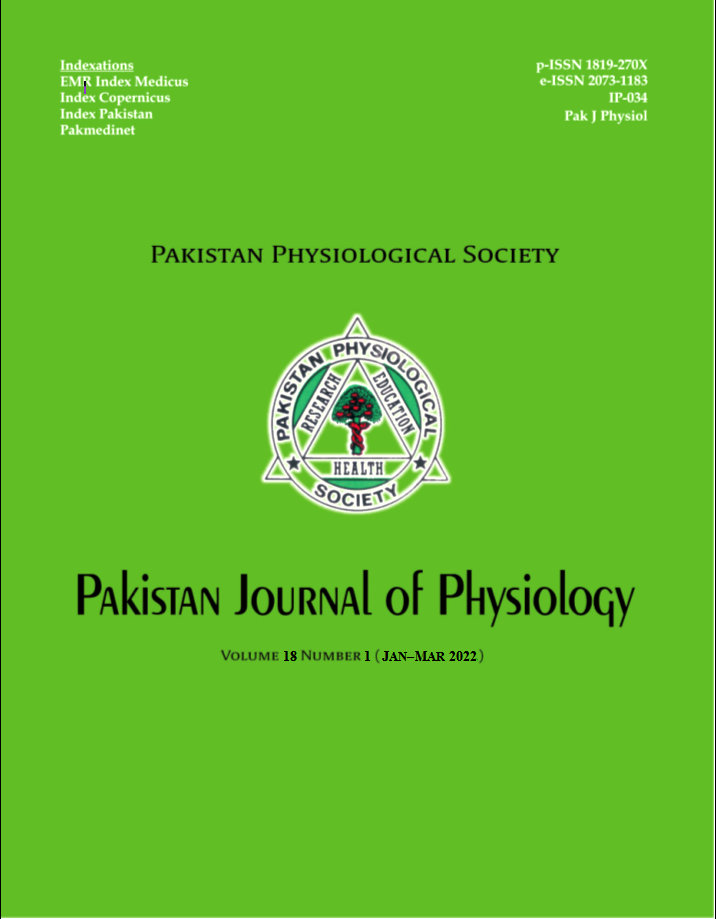PREVALENCE OF ANEMIA IN PREGNANT WOMEN
DOI:
https://doi.org/10.69656/pjp.v18i1.1426Keywords:
Anaemia, iron deficiency, pregnancy, status, prevalence, Kashmir, womenAbstract
Background: Anaemia is defined as a medical condition in which the red blood count or haemoglobin is lower than normal levels. Deficiency of haemoglobin can be due to lack of vitamin B12, folic acid and iron, extreme blood loss or nutrient-deficit diet. Anaemia during pregnancy is harmful both to mother and foetus. It can cause pre-mature delivery and birth defects. Iron supplementation is often recommended to pregnant women. The aim of study was to find out prevalence of anaemia in pregnant women. Methods: The study was carried out using quantitative methods. A sample of 300 participants was taken using purposive sampling technique. Socio-demographic data was collected from participants after informed consent. Haemoglobin levels were recorded for each participant using Blood Complete Picture already available with them. Results: There exists high prevalence (74.6%) of anaemia in pregnant women. The prevalence is much higher (80.3%) in the 3rd trimester of pregnancy. Low intake of meat was observed in 73% of the anaemic women. Low intake of other iron rich food was also observed in more than 50% of the participants. Only 93 participants had their MCV reports with them (53.7% among them had low MCV). This high rate of prevalence is associated with iron-deficient diet and unawareness about seriousness of the problem. Conclusion: There is high prevalence of anaemia among pregnant women associated with iron-deficient diet and lack of awareness. Introducing screening tests for anaemia, raising public awareness, and educating females about importance of nutrition diet are recommended.
Pak J Physiol 2021;18(1):16?9
Downloads
Downloads
Published
How to Cite
Issue
Section
License

This work is licensed under a Creative Commons Attribution-NoDerivatives 4.0 International License.
The author(s) retain the copyrights and allow their publication in Pakistan Journal of Physiology, Pak J Physiol, PJP to be FREE for research and academic purposes. It can be downloaded and stored, printed, presented, projected, cited and quoted with full reference of, and acknowledgement to the author(s) and the PJP. The contents are published with an international CC-BY-ND-4.0 License.












